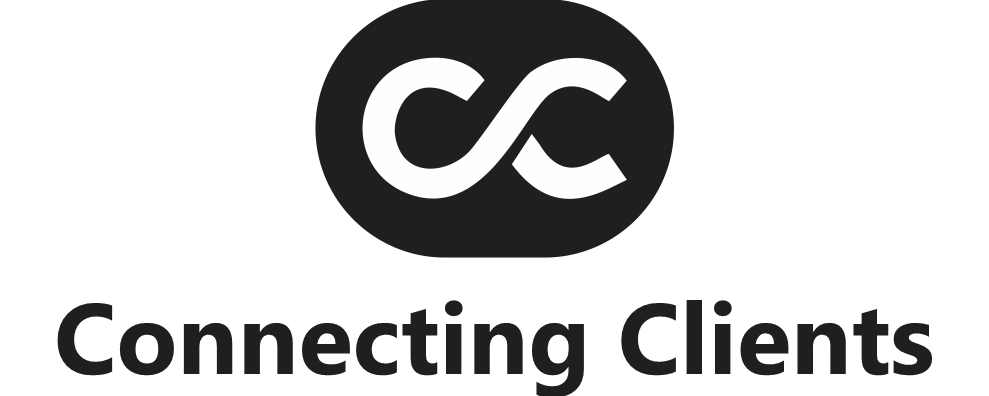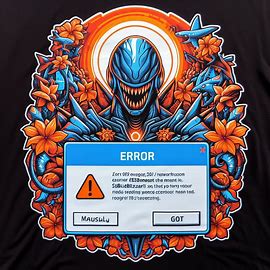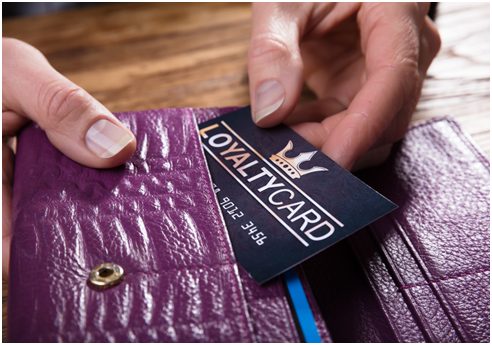How to Generate Leads Through Content Marketing
Business owners and Content Marketing often put a lot of time, money, and effort into getting leads that don’t convert into sales. The reason they don’t is that they fail to offer value first.
The ‘dirty truth’ is that consumers only buy when there is something in it for them.
Even if you have a product or service that you believe will help your potential clients, marketing its benefits and features may not be enough to engender interest or persuade a purchase.
It takes anywhere from six to eight touchpoints to turn a lead into a sale.
To attract qualified leads and convert them, you need a nurturing process.
This usually comes in the form of a sales funnel whose main component is content that offers valuable information that attracts interested parties who are ready to buy.
Content Marketing for Lead Generation
Before getting into how to utilize content marketing to generate qualified leads, a brief definition of content marketing is in order.
Content marketing is the process of creating and publishing content on your website or social media platforms to attract qualified leads and help move them down your sales funnel to the point of purchase.
The most effective content, whether it be in written, audio, or video format will be original, unique, and relevant. It will speak to an audience rather than at them.
The most engaging kind of content is one that answers an audience’s questions.
Of course, creating this type of content is only possible if you have done the proper target audience research.
With it, you’ll already know your audience’s problems and questions and what solutions they need.
This will enable you to tie them into your offer so that they are more likely to follow you, join your email list, and consider making a purchase later on down the line.
The Benefits of Content Marketing
Content marketing is one of the best marketing methods you can use to impact your audience’s decision-making process.
It provides the following benefits for your brand:
- Increases Audience Retention
- Helps Create More Trending Social Media Topics
- Builds Brand Authority
Of course, the ultimate benefit, and the one we are focusing on here, is its ability to generate leads.
People are just more likely to follow a brand and adhere to its suggestions once they have ‘connected’ with it through its content.
Now that you know why content marketing helps generate qualified leads, you probably want to know how to use content marketing to do the same.
In the following section, five of the most effective content marketing strategies to boost leads and sales have been listed.
You can use them immediately to engage your audience and build trust between your brand and them.
Five Ways to Generate Leads Through Content Marketing
Whether you want people to sign up for your email newsletter, follow you on Facebook, or subscribe to your YouTube account, you have got to deliver the kind of content that makes them want to give you their information.
The following five types of content have been proven to do just that.
Educational eBooks
eBooks are one of the best ways to generate leads and convert leads into paying clients and customers.
More than half of B2B businesses use eBooks in their content marketing campaigns.
Creating an eBook allows you to go more in-depth and offer more detailed information to your target audience, thus creating more trust and authority for your brand.
It also allows you to tailor your content to the specific stage of the buyer’s journey your audience is currently in.
Some of the content that you can include within your eBook includes:
- Industry Tips
- Case Studies
- Product/Service Overviews
Whichever type of topic you choose to focus on, keep in mind the following tips.
Write Your E-Book for Your Target Audience
Again, you need to know who your target audience is first to provide them with content that aligns with their current needs.
Which information can you provide that will be most valuable for them at the moment?
To do this, consider which stage of the sales funnel and buyer’s journey they are in.
Offer them research content when they are looking for information and buyer’s content when they are ready to purchase.
Keep It Clear and Concise
Considering that most people will download your eBook via the web, you should tailor it to be within their reading range.
The average web visitor reads close to 30 percent of the content on a web page.
This translates into roughly 1,000-1,5000 words. Of course, if you feel that you need to provide more information to suit your audience’s needs, then do so, but try to stay in the 2,000-3,000 word range.
To stay focused, clear, and concise with your words, make your priority to educate and engage your audience without using any ‘fluff’ or ‘filler’ information.
Use Your Brand’s Colors
Aside from the benefit derived from using your brand’s color scheme, namely brand awareness, colors also play a pivotal part in purchase behavior.
An overwhelming number of purchase decisions is the result of color alone.
Colors help create an emotional connection rather than a logical one – it is easier to convert people when they are thinking with their hearts instead of their heads.
While there is no set way to choose the color scheme for your eBook, it is important to use colors that represent your brand wisely.
This way your readers will get a good idea of what your brand is all about and why they should listen to what you are saying and consider what you are offering.
Use Images
Images and graphics play an important role in directing the readers’ attention towards key points.
Any images you use should help readers focus on the most important information you have included within your eBook.
While they are great for directing attention, be sure not to use too many or they will have the opposite effect.
You don’t want the images to distract your readers away from the key points and message you are trying to convey.
Use graphics only when you want to highlight important information and use headlines, subheadlines, and copy layouts to emphasize the rest of your words.
Guest Blogging
The second way you can attract qualified leads is to guest blog on other popular and credible sites within your industry or niche.
Guest blogging is an effective way of building your brand because it automatically gives you authority when you appear on popular sites where your target audience visits.
There are three things you need to do before you start requesting other blogs to accept your articles:
- Find popular blogs related to your niche or industry.
- Think of ideas for articles that will benefit their audience.
- Create a lead magnet and connect it to your email service provider.
The first two elements are important because you need to find sites where your audience hangs out and, once you do, deliver a compelling ‘pitch’ to those sites as to why they should accept your post.
The last part is important because creating a lead magnet is how you will collect the information you need.
Tips for Collecting Leads With Guest Blogging
After you deliver valuable information to readers and build authority and trust by being featured on a trustworthy and popular site within your niche, you have to give people a reason to give you their email.
Once you have their info, you can continue to add value to your email subscribers and ultimately showcase your offers to them regularly to increase sales.
The conversion rates for email marketing campaigns are around 15 to 20 percent.
While creating your lead magnet, make sure that it is relevant to your guest blog post and the blog you are guest posting on or it will fail to convert.
Also, never insert the lead magnet URL link within the body of your post.
Instead, share it in your introduction, author’s bio section, or in the footnote of your article so you don’t come off as spammy.
Remember, guest blogging is about building authority and trust, not tarnishing it.
Visually Appealing Content for Social Media
Creating content for social media can get you leads as well but it has to be done correctly.
Social media users prefer images to long drawn out text, which is why marketers tend to use images over text for their social media posts.
80 percent of marketers use visual content for their social media posts.
This does not mean, however, that you should only create and upload images, as the people you are trying to convert into leads will be interested in more in-depth information regarding you, your company, and your offers.
Therefore, it is wise to utilize both images and words to get leads. Use visual elements to get social media users to click through to your latest blog post or guest blog post.
If you have created a visually enticing image that directs to a valuable and informative blog post where people can sign up to your email list, you are more likely to capture more qualified leads than by asking people to sign up for your newsletter straight from a social media site.
Why is this so?
Because social selling requires a brand to build a personal relationship with its audience first before ever asking them for personal information or to make a purchase decision.
However, your images are going to have to ‘hook’ people’s attention to get them to click over to your blog post or landing page.
Otherwise, you won’t have a chance to add value and possibly collect a lead.
Tips for Using Images Effectively
Here are some of the images that work well for capturing attention on social media:
- Photos (personal or company)
- Collages (events, perspectives, product details)
- Text Over Plain Background (quotes, headlines, blog/book excerpts)
- Text with Photo (storytelling)
- Icons/Illustrations
- Screenshots (attention-grabbing)
- As for which type of content you should direct social media users to through your images, get ideas from what has already worked in the past.
Sites like BuzzSumo show you what kind of content has gotten the most love from social media platforms (shares, likes, etc.).
This allows you to model similar content for your content marketing strategy.
Also, don’t forget that your content should be related to your industry, niche, and products, as you want to qualify leads from your social media posts.
That way, you will best be able to reach people who are already interested or who will most likely be interested in what you have to say and offer.
Webinars
Webinars are very effective in generating leads, because they instantly help establish you as a credible source.
As a result, people are more likely to give you their details for a chance to hear your expert advice.
Another reason webinars perform so well in garnering leads is because they offer tons of value to those who join them.
Using live video sessions for training and tutorial purposes helps get the information across better.
Participants can usually interact with the host and moderators, getting their questions answered instantly.
You could even offer a webinar as a lead magnet — participants have to sign up to join — and generate leads that way.
This frees you up to use the webinar for education and conversion purposes only, since you already have obtained the leads beforehand.
Even though webinars are great for generating high-quality leads, they are often not used by marketers and brands because they are not easy to set up.
If you are new to webinars, you might want to collaborate with other brands who share a similar audience and have some experience conducting them.
While you will usually have to split the leads and sales through such partnerships, you get to piggyback off the experience and authority of more seasoned webinar marketers.
Even if you are a seasoned webinar veteran, you should still consider the following webinar tips to strengthen your webinar marketing foundation and even pick up some new ideas you may have never thought of before.
Coming up With Content for Your Webinar
Since you are using your webinar for lead generation, many of the attendees will probably have never heard of you or your brand before.
Therefore, you want to spend the first part of the webinar introducing your brand and sharing your story. In other words, spend some time building rapport.
As for the rest of the webinar, you need to offer engaging and informative content. To do so you will have to do some market research.
Your research will help define your audience so you can tailor your content to their specific needs keeping them engaged and open to the possibility of considering any offers you may be promoting at the end of your webinar.
Market research helps in creating a buyer persona you can base your webinar content off of.
Utilizing the buyer’s journey will also help you in the content creation process.
Most of the attendees will probably be in the awareness stage and know little to nothing about the problems they have, or how your brand can help them.
So you are going to have to spend a significant time educating them about problems common to your market and the possible solutions to those problems before you mention your offer.
Setting up Your Landing Page
Your webinar landing page is responsible for collecting leads — registrant’s names and email addresses.
You won’t have a lot of time to convince people to sign up for your webinar so you have to build a landing page that compels visitors to register in less than a minute.
The average time a user stays on a website is around 15 seconds.
To facilitate this process use the following webinar landing page best practices:
- Use a short video on your landing page to increase engagement and rapport.
- Your copy should focus on the benefits of your webinar and your CTA (call-to-action) should emphasize its value.
- If you are partnering with other brands, be sure to mention them to instantly build credibility and trust.
- Limit the number of spaces to create a sense of urgency and scarcity.
As the purpose of your webinar will be to collect leads, don’t forget to mention that it is free — you don’t want to scare off anyone from entering their information and becoming a lead.
Promote Your Webinar
A major part of attracting high-quality leads to your webinar is how you promote it.
Use the following promotional tips to find and attract the right people for your webinar:
- If partnering with other brands, send email broadcasts to their list as well as yours, encouraging subscribers to join the event.
- Mention your webinar in your blog posts, guest posts, and social media posts – don’t forget to link to your landing page.
- If you have a sales team, ask them to promote the webinar to their contacts.
- Ask current customers to spread the word about your event to anyone they think might be interested in it.
- Use press/news releases if possible to attract more attention to your webinar.
- Use paid advertising to attract potential leads out of your immediate sphere of influence – Facebook Ads and Google Ads are a great place to start.
Ideally, you want to use all of the above methods to promote your webinar but at the same time, you want to focus most of your time, energy, and money on the traffic sources that are bringing in the most registrations (leads).
To track this, you can create a unique URL link for each traffic source utilizing the Google URL Builder.
Quizzes and Surveys
Believe it or not, quizzes and surveys can get you a lot of qualified leads.
The first reason is obvious. You can design your questions to pre-qualify prospects to avoid wasting your time presenting offers to people who are not interested in them in the first place.
Secondly, you can utilize the information you have gathered from your surveys and quizzes to uncover problems your prospects are facing and design content that offers solutions to those problems.
This is content marketing at its finest.
Thirdly, quizzes and surveys will help you uncover which stage of the buyer’s journey your prospects are in so you can easily tailor content for them accordingly.
Many marketers think that quizzes and surveys are hard to create, and so don’t use them to generate leads.
However, coming up with a good design and relevant questions doesn’t have to be difficult.
Here are five ways you can create and design your quizzes and surveys to get more qualified leads.
Incentivized Quizzes and Surveys
The main challenge with quizzes and surveys is the time it takes for participants to fill them out.
People don’t like to give up their time and energy for nothing in return.
Therefore, it is a good idea to offer people the chance to win something for taking part.
For example, you can offer:
- Vouchers
- Free Products
- Trial Services
- Monetary Incentives
In short, give away whatever you feel would be a valuable incentive for your target audience.
Industry Development Quizzes and Surveys
If you are trying to get more B2B leads, then developing a quiz or survey on recent industrial changes can be an effective way to do so.
The fast-paced business environment of today makes it very difficult to keep up with vital industry developments.
Designing quizzes and surveys around recent developments affecting your prospects will help them better prepare for the upcoming changes.
Personalized Quizzes and Surveys
Personalizing your surveys and quizzes by segmenting your target audience and tailoring the questions for each segment will maximize your lead conversions.
To find the specific interests and problems of each segment of your broad target audience, you need to know your audience intimately.
Again, the best way to get to know your audience is through market research.
Once you know your audience and know how to segment them into specific groups, you can create different questions for each of them and target them with tools like Optimizely to show the most relevant lead capture surveys or quizzes to each of your segmented groups.
You can also use social media targeting and segmenting techniques to segment your audience and promote your different quizzes and surveys to relevant prospects.
Qualifying Quizzes and Surveys
As was stated earlier, you can create quizzes to score and pre-qualify leads.
Doing so will make sure you are only collecting the information of those prospects who are most likely to be interested in what you are selling, as well as figure out how to market to each participant based on how they have answered your questions.
To utilize this technique, you have to format your questions in such a way to get the information you need, without having participants jump through a lot of hoops.
To create quick, pre-qualifying questions focus on the following five areas:
- Establishing a Relationship
- Discovering the Problem
- Finding a Solution
- Discovering a Timeline
- Establishing Future Success
To get a more in-depth look at the questions that go under each of the above sections, visit the following guide: 25 Questions to Qualify Your Leads Faster.
Disguised Quizzes and Surveys
People tend not to like filling out forms, quizzes, or surveys which is why you might have to create one that doesn’t look or feel like a form, quiz, or survey
Approximately less than 15-20 percent of people fill out surveys.
Even though there is no definitive way to create a ‘disguised’ quiz or survey since you are pretty much disregarding common quiz and survey best practices and guidelines when designing one, you can model the following example.
With such a model, you can get the information you need without disturbing your prospects’ peace of mind.
Conclusion
There are a variety of ways to generate leads through content marketing but the above five strategies, when applied correctly, can get you more leads than you know what to do with.
The best way to start generating leads with content marketing is to try all of the above suggestions and focus most of your attention on the ones that are converting the best.
This will Get you the Most High-Quality Leads.
While most of the above strategies require the written word to produce lead-generating content, you can utilize images that direct your prospects to webinars if you don’t like to write.
The sooner you start producing content that your audience likes, the sooner they will trust you.
That way, they will be more willing to give you their personal details, so you can stay in touch with them.
Then, it’s up to you to continue delivering valuable content to them, together with the offers that will solve their problems and make their lives easier.







